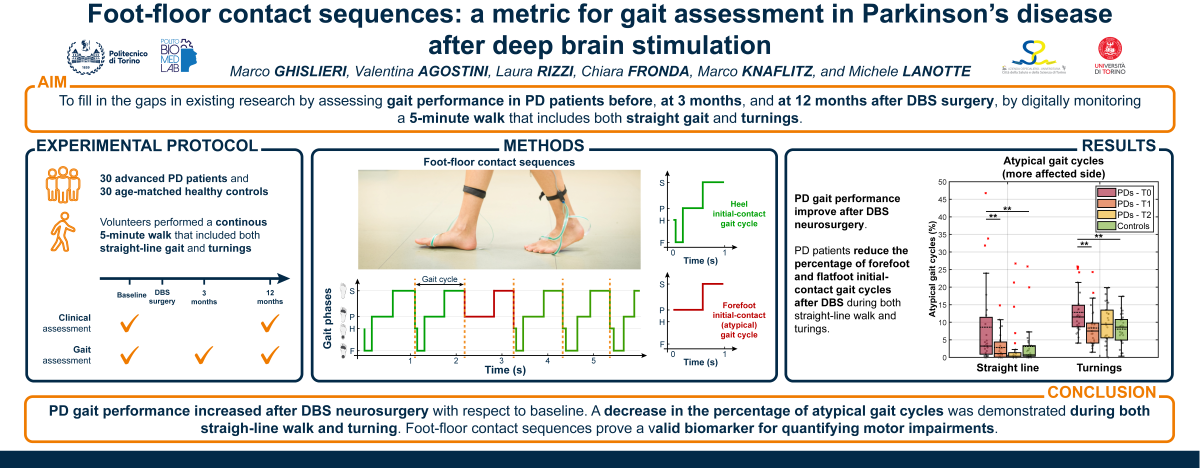Digital gait monitoring is increasingly used to assess locomotion and fall risk. The aim of this work is analyzing the changes in the foot-floor contact sequences of Parkinson’s Disease (PD) patients in the year following the implant for deep brain stimulation (DBS). During their best-ON condition, 30 PD patients underwent gait analysis at baseline (T0), at 3 months (T1), and 12 months (T2) after the DBS neurosurgery for bilateral high-frequency subthalamic nucleus stimulation. Thirty age-matched controls underwent gait analysis once. Each subject was equipped with bilateral foot-switches and a 5-minute walk was recorded, including both straight-line and turnings. The walking speed, turning time, stride time variability, percentage of atypical gait cycles, stance, swing, and double support duration were estimated. Overall, the gait performance of PD patients improved after DBS, as also confirmed by the decrease in the UPDRS-III score from 19.4±1.8 to 10.2±1.0 points (T0 vs. T2) (p < 0.001). In particular, the percentage change of atypical gait cycles of PD more affected side decreased at T1 (Straigh-line: -72%; Turnings: -43%) and at T2 (Straigh-line: -54%; Turnings: -20%). The percentage of atypical gait cycles proved an informative digital biomarker for quantifying PD gait changes after DBS, both in straight-line paths and turnings.

